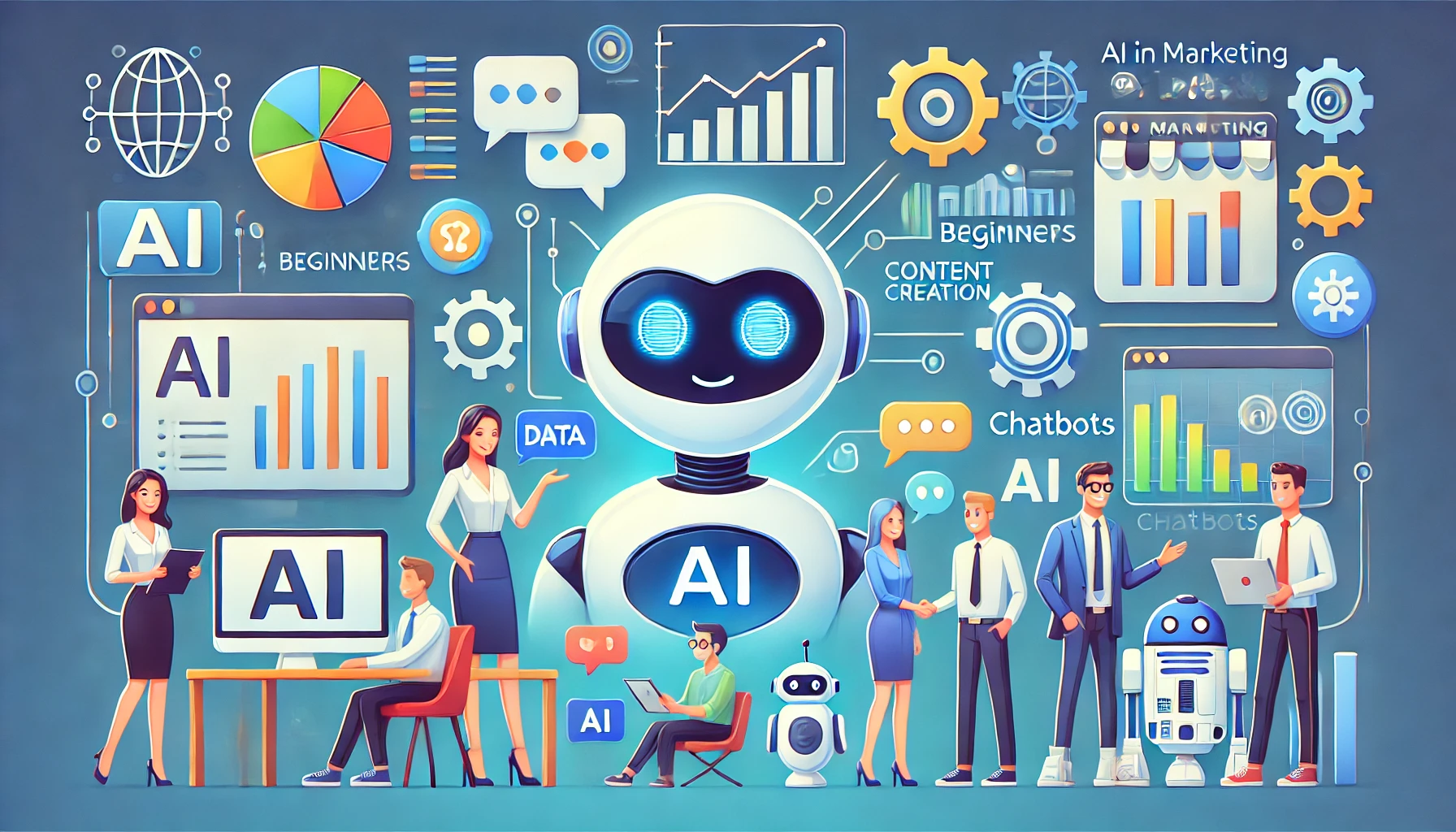
Demystifying AI for Marketers: A Beginner’s Guide
Artificial Intelligence (AI) is no longer a futuristic concept; it has become an integral part of modern marketing strategies. However, for many marketers, the world of AI can still feel complex and intimidating. This guide aims to simplify AI for marketers, breaking down its concepts, benefits, and practical applications in an easy-to-understand way.
What is AI in Marketing?
AI in marketing refers to the use of machine learning algorithms and data analytics to automate tasks, predict trends, and enhance decision-making. By leveraging AI, marketers can gain deeper insights into consumer behavior, streamline operations, and create personalized experiences.
Key Components of AI:
- Machine Learning (ML): Algorithms that improve over time as they analyze more data.
- Natural Language Processing (NLP): Enables machines to understand and respond to human language.
- Predictive Analytics: Uses historical data to forecast future trends.
- Automation Tools: Software that performs repetitive tasks efficiently.
Benefits of AI for Marketers
1. Improved Targeting
AI enables marketers to segment audiences with precision, ensuring that campaigns reach the right people at the right time.
2. Personalization at Scale
AI can analyze large datasets to deliver personalized recommendations, emails, and content to individual consumers.
3. Time and Cost Efficiency
By automating repetitive tasks, AI allows marketers to focus on strategy and creativity.
4. Enhanced Customer Insights
AI tools provide in-depth analytics, helping marketers understand consumer preferences and behavior.
5. Real-Time Optimization
AI adjusts campaigns in real time based on performance metrics, maximizing ROI.
Practical Applications of AI in Marketing
Chatbots
AI-powered chatbots provide 24/7 customer support, answer queries, and guide users through the purchasing process.
Content Creation
AI tools can generate blog posts, social media captions, and even video scripts, saving time and maintaining quality.
Email Marketing
AI optimizes email campaigns by personalizing subject lines, content, and send times for better engagement.
Ad Targeting
Platforms like Google and Facebook use AI to target ads based on user behavior, ensuring higher click-through rates.
Predictive Analytics
Marketers use predictive analytics to anticipate customer needs and deliver relevant offers before consumers even realize they want them.
How to Get Started with AI in Marketing
1. Identify Your Goals
Determine what you want to achieve with AI, whether it’s improving customer engagement, increasing efficiency, or driving sales.
2. Start Small
Begin with simple AI tools, such as chatbots or email personalization, before integrating more advanced technologies.
3. Invest in Training
Ensure your team understands how to use AI tools effectively by providing training and resources.
4. Leverage Available Tools
Explore AI-powered marketing tools like HubSpot, Salesforce, and Jasper to streamline your efforts.
5. Monitor and Optimize
Continuously analyze the performance of your AI-powered campaigns and adjust your strategies for better results.
Overcoming Common Misconceptions
“AI Will Replace Marketers”
AI is not here to replace marketers but to enhance their capabilities. It handles repetitive tasks, allowing marketers to focus on creativity and strategy.
“AI is Too Complex”
While AI technology can seem overwhelming, many tools are designed to be user-friendly and accessible to beginners.
“AI is Only for Big Brands”
AI solutions are scalable and can be tailored to fit businesses of all sizes, from startups to global corporations.
Conclusion
AI is transforming the marketing landscape, offering tools and strategies that make campaigns smarter, faster, and more effective. By understanding the basics and starting small, marketers can harness the power of AI to drive growth and innovation.